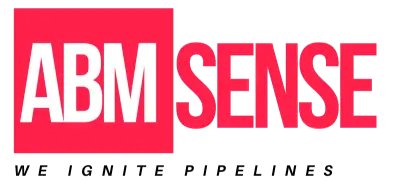What’s the Role of Whitepapers in B2B Demand Generation?
In the contemporary competitive condition, knowing the answer to the question, “What is the role of whitepapers in B2B demand generation?” is vital. Why? Because if your B2B company isn’t using whitepapers to promote lead generation, you’re missing out on one of the most effective vehicles for doing so.
Countless studies over the past several years have shown that prospects in the B2B space respond favorably to this medium of communication.
Understanding Whitepapers as Marketing Tools
Whitepapers are thorough, commanding documents that address particular issues that target audiences deal with. They do more than just show a company is smart; they give worthwhile intelligence to possible customers. In a way, a company that produces a whitepaper is proffering a plumb line that many potential customers can follow to make their way toward the company’s products or services. A commandment that many companies seem to obey is that whitepapers are for B2B audiences.
Moreover, the potency of whitepapers is due to their all-encompassing character. They frequently delve into the types of trends, challenges, and solutions that a given industry might be grappling with. This thoroughness enables enterprises to demonstrate their expertise, which instills a kind of trust in prospects that nudges them closer to the buying decision. For example, a firm in the business of technology might produce a whitepaper on the sorts of cybersecurity threats its software is designed to counter. Such a document would both outline the nature and extent of those threats and describe the kinds of solutions that the firm’s software offers.
In addition, whitepapers are excellent for generating leads. A firm can use a whitepaper to capture a prospect’s contact information, growing its email list. This is a strategy employed by many B2B companies; HubSpot reports that 45% of firms use whitepapers as part of their lead generation efforts.
What’s the Role of Whitepapers in B2B Demand Generation?
Serving more than one purpose, whitepapers play an essential role in B2B demand generation. Not only do they act as signposts to engage prospects, but they also steer those prospects toward richer interactions. Engagement definitely does come to mind when thinking about the potency of whitepapers. Yet, that potency can easily fade if the content strategy surrounding them is unaligned with B2B demand generation.
- Developing brand credibility: Through the presentation of content that is well-researched, firms have the opportunity to display their knowledge and know-how.
- Help buyers understand what they’re buying: Whitepapers serve as a means of self-education for lots of potential leads.
- Promote participation: Content that invites participation often leads to queries and dialogues, offering firms a window into the grievances of their customers.
- Produce leads that are not only prospective but also of high quality; that is, leads that are qualified. This is Eric’s specialty. He captures contact information in such a way that we are able to funnel these key individuals directly into our sales process. And here’s the kicker: Over 90 percent of these individuals have opted in, meaning they are allowing us to contact them. Qualified leads.
An example of a consulting firm might produce a white paper on digital transformation strategies. Not only does this establish them as experts, but it also attracts businesses that are facing those challenges. Consequently, the firm can and does nurture these leads through targeted email sequences, ultimately guiding them toward a consultation.
Integrating Whitepapers into Your Marketing Strategy
To ensure that whitepapers are as effective as possible, businesses should incorporate them into their larger marketing strategies. Here are some detailed, practical steps for doing just that:
- Identify topics that strike a chord: Investigate the pain points of the industry and choose to illuminate the topics that speak to the most urgent of those problems.
- Promote in a targeted way: Use newly devised white papers to do email marketing, social media posting, and webinars.
- Engagement tracking: Keep an eye on the downloads and email interactions to measure the real-world effectiveness of the white paper in generating interest.
- Regularly update: Regularly keep the content fresh by reworking and updating the whitepapers as industry trends shift.
In addition, A/B testing can be extremely useful. Testing various titles, layouts, and promotional strategies can yield gains in conversion rates. For example, optimizing a landing page for a whitepaper by altering the call-to-action (CTA) or form length can result in substantially greater engagement.
The Future of Whitepapers in B2B Demand Generation
The B2B environment is changing, but the relevance of whitepapers endures. Even so, their appearance and method of reaching the audience are in flux. Businesses now reach for a multimedia palette. They dress whitepapers in video, infographic, and podcast garb to appeal to a spectrum of likes and loves. Interactive content is getting serious play. Demand Metric says that 40% of B2B marketers are planning to use more of it. And since it is an enhanced or dressed-up form of what has always been a rather austere content type, whitepapers are being planned as a more interactive experience.
In addition, improving whitepapers with data analytics can yield even deeper insights into user behavior. This helps an organization to understand its audience and tailor content more effectively. For instance, if an organization discovers through analytics that users are spending more time with case studies in a whitepaper, it can adjust its content strategy accordingly.
To sum up, grasping the role that whitepapers play in B2B demand generation is crucial. When done right, whitepapers can create substantial engagement and lead-gen activities. Companies that know how to work whitepapers into the mix get not only improvements in their demand gen strategies but also boosts in positioning themselves as serious authority figures in their respective industries.
Explore More on us
Discover insightful blogs on our Blogging Space, check our WordPress Visitor Identification Plugin, and learn more about Account-Based Marketing.










